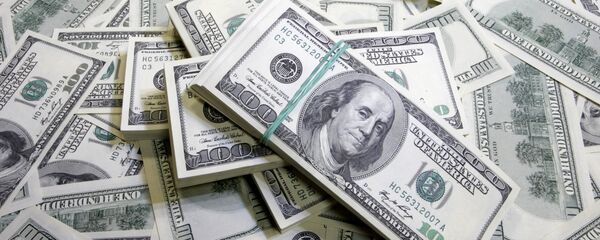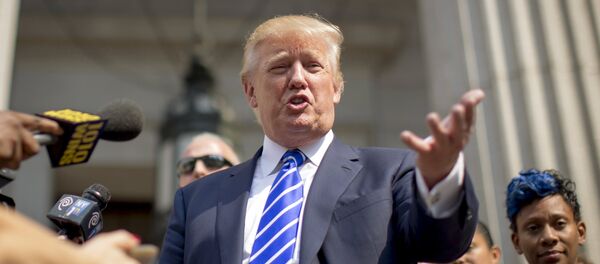Kristian Rouz — US business spending gained momentum in the first quarter despite the decline in new orders for US-made capital goods, supporting expectations that Trump-related investment optimism would support growth during the aforementioned period. However, as investors shift their attention to the Trump-proposed fiscal stimulus, the softening demand for manufactured goods might suggest the second quarter is likely to be less encouraging in terms of business spending.
US manufacturing has started a troubled recovery from the lengthy decline of the past several years in 1Q17, as energy and utilities posted a robust expansion. Additionally, shipments of machine parts and electric furnaces increased significantly amid accelerating demand, but overall, US business spending remained subdued. In the second quarter, negative trends might become more pronounced.
The US Federal Reserve said US business investment has "firmed somewhat", which is hardly enough to push the overall growth for Q1 above the anticipated 0.9pc.
"There has been a remarkable turnaround in both shipments and production of business equipment over the past 12 months," Andrew Hunter of Capital Economics said.
In February, orders for durable goods rose by 1.7pc compared to an increase of 2.3pc the previous month. Orders for commercial aircraft posted a massive 48pc increase, uplifting the sentiment in the US aerospace industry, but orders for cars and lorries slid by 1pc due to a lack of effective demand: the US automobile market is struggling amid the rising volumes of loan delinquencies and "bad loans".
"The evidence is building that manufacturing activity is on something of an upswing and that capital spending on business equipment is poised to advance for the second consecutive quarter," John Ryding of New York-based RDQ Economics said.
However, year-on-year dynamics have been more promising for the industrial sector thus far. In the first two months of 2017, orders are 1.6pc higher in volume than in the first two months of the last year. The demand for US-made manufactured goods is firming abroad due to the recent recovery in oil prices, and stronger global growth is seen as an especially encouraging development for certain export-oriented sectors of the secondary sector of the US economy.
"Manufacturing surveys appear to promise much stronger numbers, so we're hoping for better news ahead," Ian Shepherdson of Pantheon Macroeconomics said.
US growth for the first quarter might have not slowed down as dramatically as the Atlanta Federal Reserve Bank is expecting, ebbing to 0.9pc growth year-on-year from 1.9 percent in 4Q16. According to Macroeconomic Advisers, US growth might hit 1.2pc in 1Q17.
Still, many in the US business community are waiting for the White House to implement new economic policy measures before changing their mode of operation. Most of the US economy is still living in the era of the previous administration in Washington, as President Trump has not yet started or announced in detail his upcoming economic reform.
"I think it's fair to say that many of my colleagues and I note a much more optimistic frame of mind among many, many businesses in recent months," Fed Chair Janet Yellen said last week. "But I'd say most of the businesspeople that we've talked to also have a wait-and-see attitude, and are very hopeful that they will be able to expand investment and are looking forward to doing that, but are waiting to see what will happen."
Subsequently, Trump's planning to revitalize the US manufacturing might negatively affect broader growth, even if the industrial sector continues with robust expansion. The short-term negative effects of the Trumponomics will, however, be offset in the longer run through the readjustment of the domestic consumer market and a projected rise in US exports, but until the new administration implements its first economic policy measures, the US manufacturing sector will be a slow-response environment, which is likely to linger for the most of the current year.







